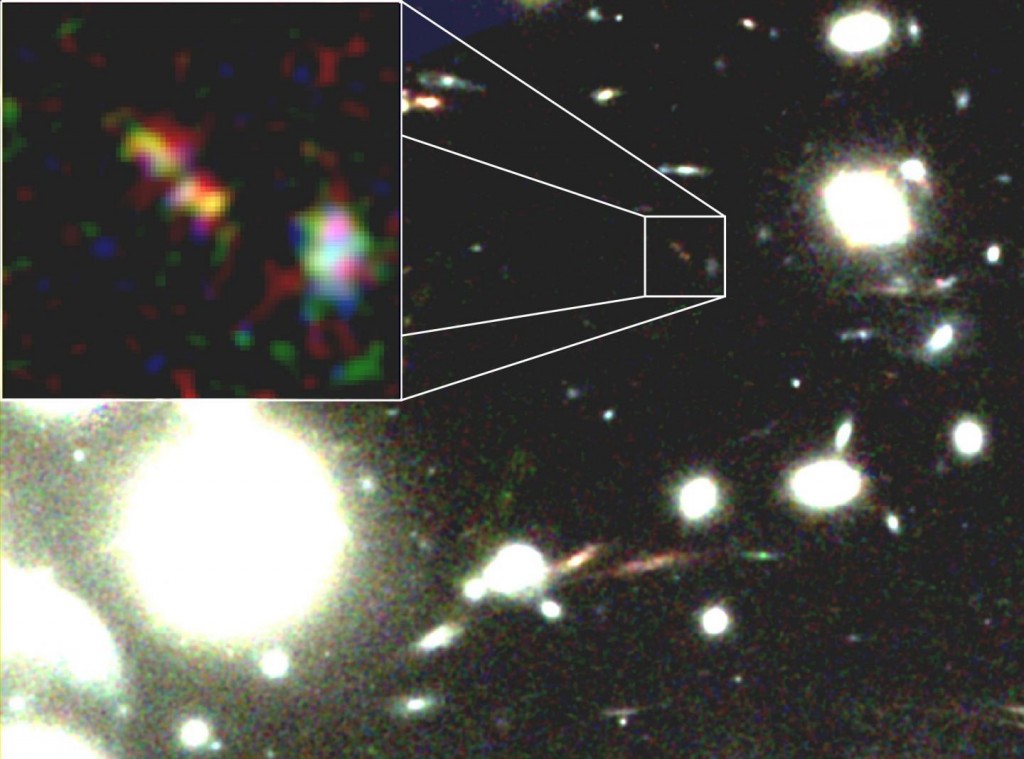A team of Astronomers from the University of Copenhagen have discovered a young galaxy filled with lots of dust made of heavy elements like carbon and oxygen iron and magnesium. The findings have already been detailed in the latest edition of the Journal Nature. The elements usually take part in the formation of new planets.
The most intriguing thing about the discovered galaxy is that it is of modest size but still filled with dust, which shows ordinary galaxies were enriched with heavier elements faster than expected. Under normal circumstances, the astronomers would not have discovered this galaxy as it is far away and faint. Between the earth and the discovered galaxy is a cluster of galaxy called Abell 1689.
The Galaxy A1689-zD1 that the scientists studied is believed to be approximately 13.1 million years old meaning it came into existence 700 million years after the big bang. A studied light also indicates that the galaxy might be enriched with huge dust particles. This was the first time according to Darach Watson at the University of Copenhagen that dust has been spotted in an ancient galaxy.
Dust plays an important role in star and planetary formation as it acts as a seed, ‘fertilizing’ galaxies for celestial body formation. Elements in the dust are usually synthesized by nuclear combustion process in stars and propelled into the space where stars eventually explode. It is usually a slow process, and older galaxies usually end up with more dust.
The discovery according to the scientists goes to suggest that early galaxies might have evolved much faster than previously thought and that Galaxy A1689-Zd1 begun forming soon after birth of the universe. Data collected suggests that the galaxy might be emitting radiation in the far infrared. Astronomers are usually able to tell which galaxies might be younger by studying the wavelengths at which they emit light; younger galaxies tend to emit hot ultraviolet light.

